Elena Rubio, a teacher in Brooklyn, New York, was five years old when she first heard the story of Our Lady of Guadalupe.
“It was on a family trip to Mexico,” she recalled. “Back then, I couldn’t figure out whether the Virgin Mary and this lady were the same person. Then my mom told me that Our Lady of Guadalupe had appeared in Mexico, and I was totally intrigued. I was fascinated, because it seemed to be a real thing, something with proof left behind.”
For Rubio and millions of other Mexicans and Mexican-Americans, December 12th holds special significance. It marks the date in 1531 when the Virgin Mary purportedly appeared to an indigenous Mexican, in the last of several apparitions.
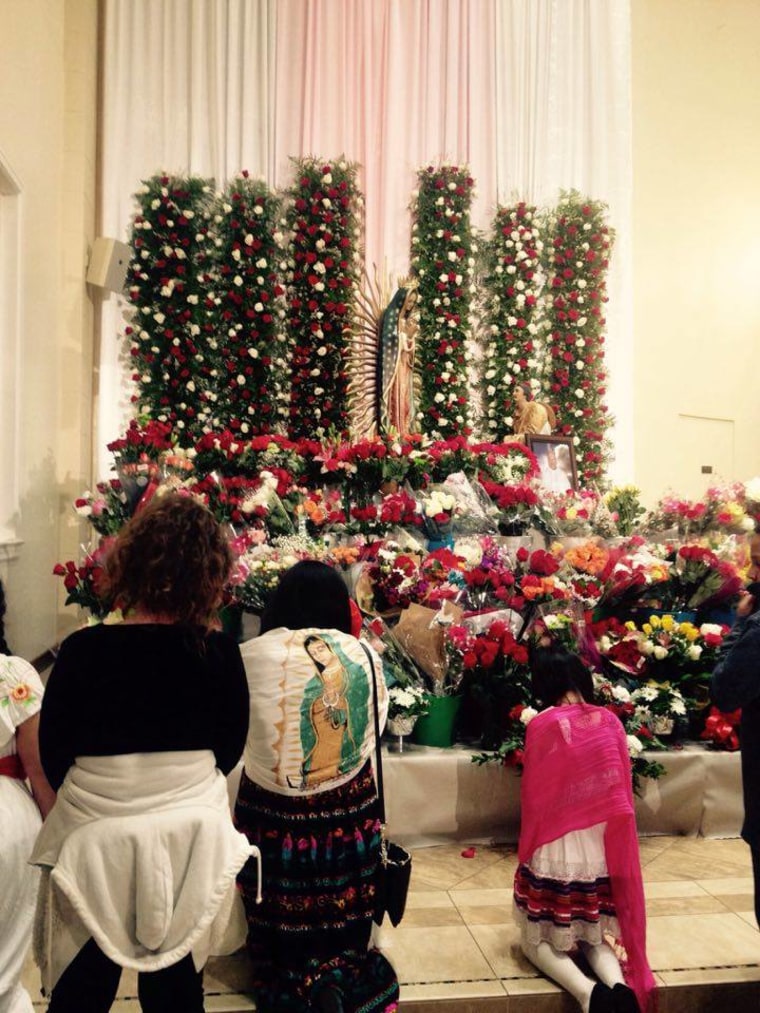
To the present day, Our Lady of Guadalupe remains a powerful symbol of Mexican identity and faith, and her image is associated with everything from motherhood to feminism to social justice.
Across the U.S., many of the faithful will be attending mass; in some communities like Des Plaines, Illlinois the mass is preceded by a pilgrimage to a venerated shrine for the beloved virgin.
RELATED: Voices: Growing Up with Our Lady of Guadalupe
Rubio is continuing the religious tradition, telling her own young children about Our Lady of Guadalupe. “It’s interesting how, in our culture, she is still so prevalent and recognizable. She is still revered, like the ultimate symbol of goodness.” Rubio revealed to NBC News that in her home, she has Our Lady of Guadalupe artwork, icons, and even a small nightlight bearing her image. “I guess she’s watching over us,” Rubio laughed.

According to lore, it was a winter’s day in 1531 when the Virgin Mary first appeared to Juan Diego, a peasant, as he was crossing a hillside near present-day Mexico City. She appeared as a dark-skinned woman who spoke Nahuatl, Juan Diego’s native language. This woman asked Juan Diego to build her a little house, a casita, on the hill. Twice Juan Diego reported this to his local bishop, who didn’t believe him. The second time, the bishop asked for proof of the apparitions.
Early on the morning of December 12th, the lady appeared again to Juan Diego and told him to gather some flowers at the top of the hill – a strange request because flowers were not in season in December. Juan Diego did as he was instructed, and found an array of Castilian roses. The lady helped him arrange them in his tilma (cloak), and he returned to the bishop with them as evidence. As Juan Diego presented the tilma to the bishop, the flowers tumbled out and the two men discovered a life-size image of the Virgin Mary on the inside of the cloak. This image is known as Our Lady of Guadalupe.
To Jeanette Rodriguez, author of Our Lady of Guadalupe: Faith and Empowerment Among Mexican-American Women, there are aspects of this story that make it unique. She finds it significant that the apparition chose to appear to a peasant.
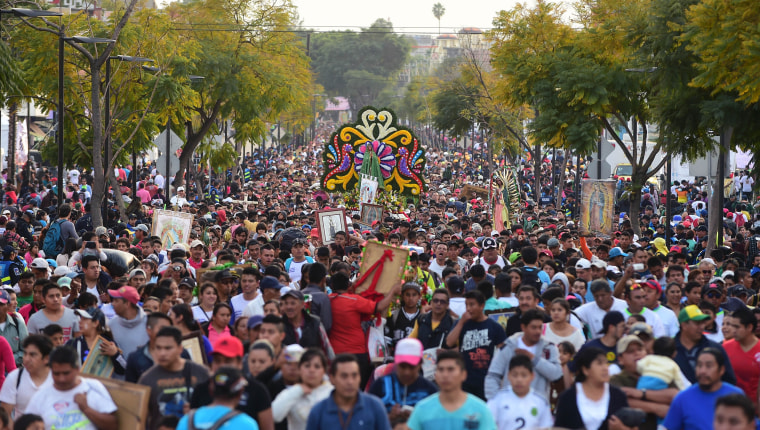
“That makes sense, because God always chooses the people the world rejects,” she said. “The Lady of Guadalupe also offered a different brand of faith. She didn’t say, go to church or say the rosary. She said ‘If you love me, trust me and believe in me, I will respond.’”
The historical context of this story is important, according to Rodriguez, a professor at Seattle University. The apparitions were seen only ten years after the conquest of central Mexico by the Spanish, at a time when the indigenous people of the Americas were devastated.
The notion of a brown-skinned Mary figure was critical to the eventual conversion of millions of indigenous people to Roman Catholicism.
“When indigenous people saw Guadalupe’s image on the cloak, they could recognize the symbols surrounding her; the sun, the stars, the southern cross, and the placement of her hands indicating a gesture of offering,” Rodriguez said.
The sash around Our Lady of Guadalupe’s waist, Rodriguez explained, indicates that she is with child – one of the rare depictions of the mother of God as pregnant.
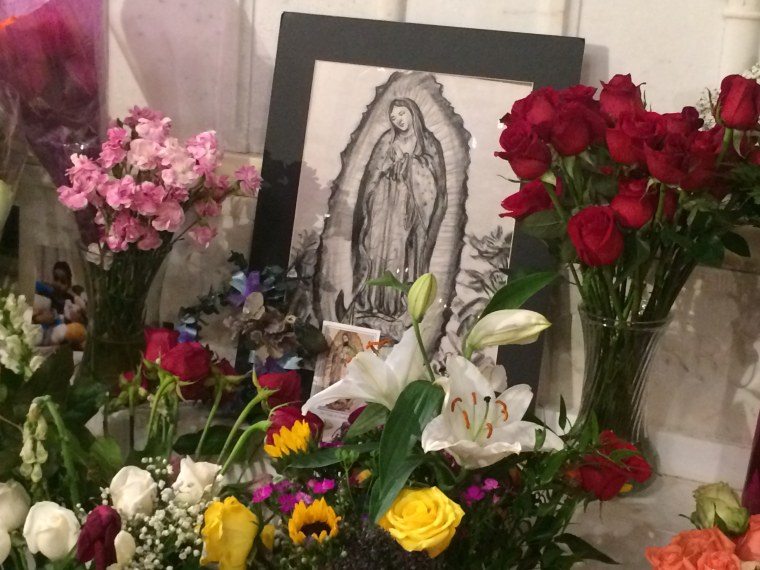
Today the Basilica of Guadalupe stands on the site where Our Lady of Guadalupe is said to have appeared to Juan Diego. It is one of the top attractions in Mexico, drawing millions of tourists and pilgrims every year. The cloak bearing the image of Our Lady of Guadalupe is on display, its colors seemingly not faded after hundreds of years.
December 12th became a national holiday in Mexico in 1859. Pope Pious XXII crowned Our Lady of Guadalupe “Empress of the Americas” in 1945, and she has long been recognized as the patron saint of Mexico.
In some ways, Our Lady of Guadalupe has become less of a religious symbol and more of a general cultural symbol, says John Moran Gonzalez, director of the Center for Mexican American Studies at the University of Texas at Austin. “The idea of the Virgin can retain her appeal without specifically being anchored in religious tradition.”
“Our Lady is seen as the champion of the underdog, of the Indian, of all those who lack power in society,” Gonzalez said. “In that sense she continues to be relevant as long as disparities in economic and political power exist. “
“You have to remember that she is the ultimate Mexican mother,” Gonzalez added. “She is all about motherhood. And who doesn’t love their mother?”
Our Lady of Guadalupe has particular resonance for Mexicans and Mexican-Americans. “We grew up with her, we are used to seeing her,” said Pat Mora, author of the children’s book, The Beautiful Lady: Our Lady of Guadalupe. “And as the Mexican-American population grows, the power of her image grows with it.”
“The sense of her as a maternal force is relevant to all kinds of people,” Mora noted. “There is almost a philosophical, contemplative quality to her. Though we may see her as silent, I see her as a figure that knows the power of quiet.”
As a writer, Mora finds the story of Our Lady of Guadalupe fascinating. “It incorporates all of the senses; the beauty of her garment, the scent of the roses, the sound of her singing. These are interesting elements for an artist to play off of.”
Several of Mora’s books have featured Our Lady of Guadalupe as a character; in one, she appeared as a guest on a talk show.
Our Lady of Guadalupe has also figured into real-life historical events. Father Miguel Hidalgo launched Mexico’s war for independence from Spain in 1810 by declaring, “Long live the Virgin of Guadalupe!” During the Mexican Revolution, Emiliano Zapata and other fighters carried her image into battle.
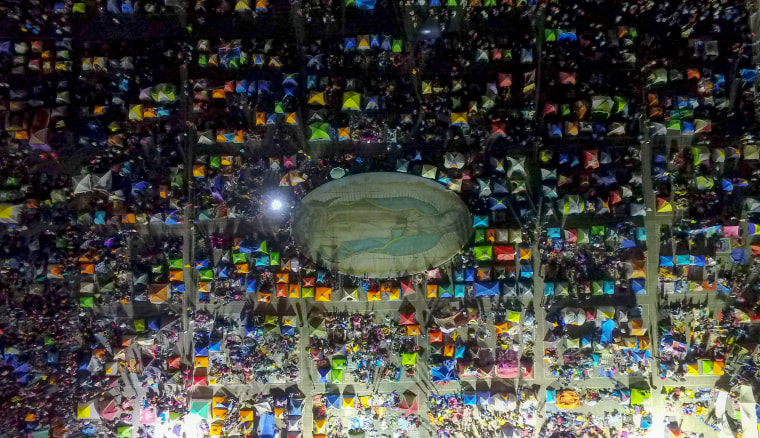
As recently as 1994, the Huffington Post reports, some Zapatista guerrillas continued this tradition during their uprising in the southern state of Chiapas. In such ways, Our Lady of Guadalupe has become a potent symbol of Mexican patriotism.
In the U.S., Our Lady of Guadalupe has at times been utilized as a social justice icon, her image evoked by everyone from Cesar Chavez in the 1970s to immigration reform activists in the 2000s.
“She is used as a symbol of justice,” Mora said, “because she holds an appeal to the poor, to marginalized people. In the modern day, we can see her as representing people standing against oppression, declaring their independence.”
In Mexican-American communities, the image of Our Lady of Guadalupe is a common sight. Aside from churches, she is seen on murals and calendars, in museums and on cholo (gang member) tattoos.
There are, however, apparently limits to the types of appropriation of Our Lady of Guadalupe’s image that the general public will tolerate.
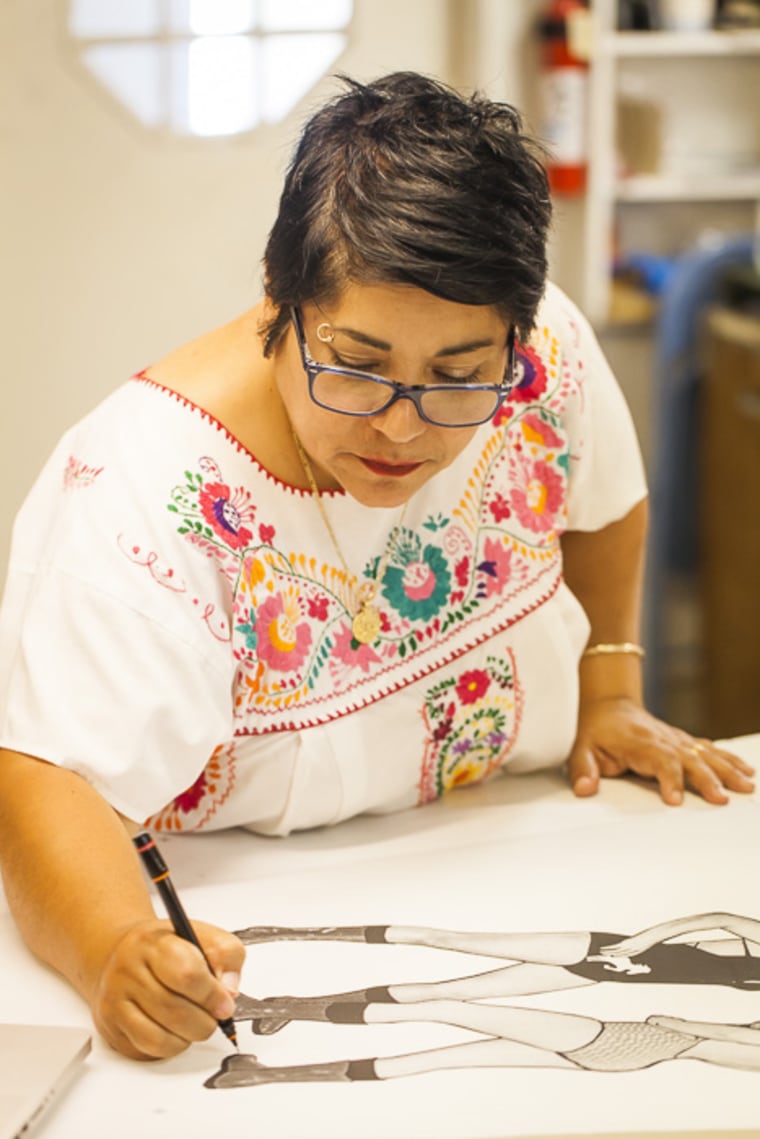
In 2001, visual artist Alma Lopez generated controversy with her rendering of Our Lady of Guadalupe in her familiar pose, wearing a bikini made of roses. Angry crowds protested museums and universities where the digital artwork was exhibited, claiming it disrespected Catholics and a sacred image. Lopez was threatened, and called a “pervert” and a “witch.”
Lopez still receives emails from people upset about her work, entitled Our Lady. “But I am a feminist, and I would never create an image of a woman without respect,” Lopez said. “It was never my intent to do work for controversy, or just for work’s sake. I have actually thought a great deal about the Virgin of Guadalupe.”
Lopez believes that the image stirs such passion in people because it taps into deep connections between memory, home and family. “In fact, the more I research the story – and its true origins – the more I believe in the power of the image.”
Lopez sees the story of Our Lady of Guadalupe as a testament to the resilience of indigenous people; a strength that she believes is embodied in modern-day immigrants who survive despite racism and stereotypes.
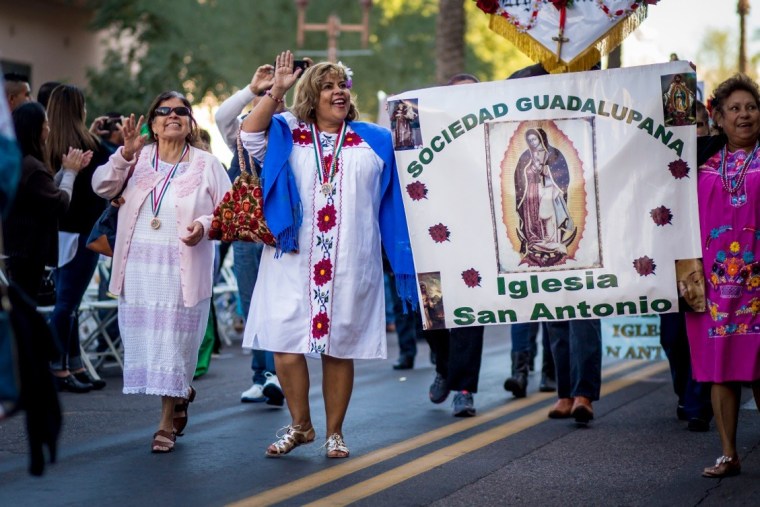
For Cristofer Pereyra, director of the Hispanic Missions Office at the Roman Catholic Diocese of Phoenix, December 12th marks a feast day that his community enthusiastically celebrates.
“We have so many events that we have had to combine them. They go on for the week before the actual date,” he said. “We have processions with mass, and thousands of people come.”
“I know that people still pass the story down,” Pereyra said. “Some of them may no longer be practicing the faith anymore, sadly. But they have the statue of Our Lady of Guadalupe at home. The devotion is real. They believe.”
Author Jeanette Rodriguez maintains that Our Lady of Guadalupe helps fuel the spirit of Mexican-Americans and other Latinos. “No matter how people try to knock us down, we never hit the floor. We have our Virgin of Guadalupe,” she said. “We have our family, our culture, and our Virgin.”
